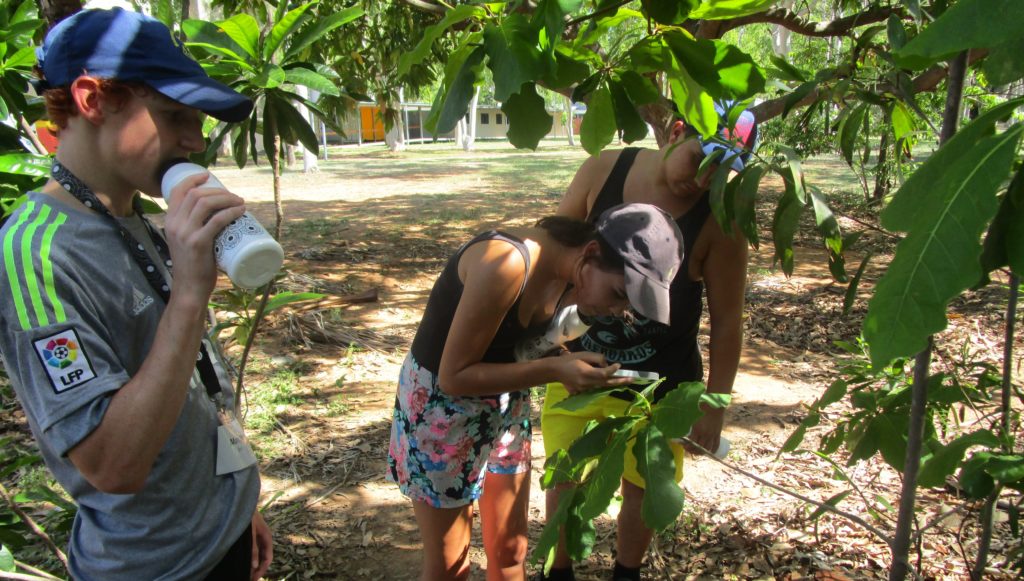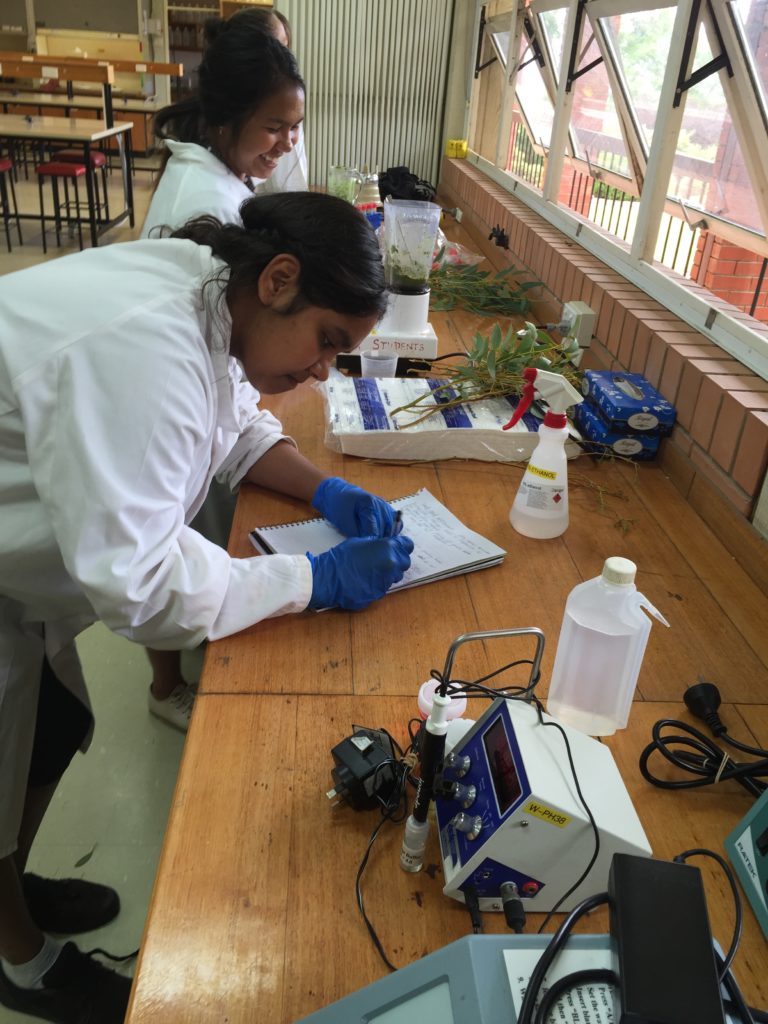Three nine-day programs across Australia hosted a total of 98 students in the Aboriginal Summer School for Excellence in Technology and Science.
ASSETS Townsville students Mannyx, Grace and Jordon searching for green ants at JCU.
Lightning pierces the sky as ladies perform a contemporary dance with traditional Indigenous movements. The fellas join in with a chorus of Didgeridoos, practiced earlier in the week. Hours ago these students were working in world class laboratories, and a week ago they were strangers.
It is the combination of science and culture that makes the ASSETS experience: three nine-day programs in Newcastle, Townsville and Adelaide hosting a total of 98 students in the Aboriginal Summer School for Excellence in Technology and Science (ASSETS).
Among the STEM professionals, teachers, mentors and volunteers who made the programs an amazing experience were our very own Caitlin Lewis, Amanda Baker and Scott Philip, who were lucky enough to experience each program in all its glory. Here are some of their favourite recollections (in no particular order!).
Dancing at Wollotuka – Newcastle
“The camp had been building up all week, we were nearing its end and tonight there was to be a special performance of students learnt earlier in the week. The fellas learnt some digeridoo skills, the ladies learnt some dance skills. It was dark, humidity was up way past 80 per cent and a storm front was coming. The evening finished with a crescendo of performance and lightning storm. A really special moment for all in attendance.”
The dance was choreographed by Tammy Gordon. The words are sung in the Wiradjuri language. The meaning of the dance is ‘to be alive with the spirit of our ancestors and to be awake’.
James Cook University Sensor Sprint – Townsville
ASSETS student Mikayla during the fire starting Inquiry at the Wollotuka Institute, University of Newcastle.
“In Townsville a bunch of amazing engineers and ecologists from James Cook University helped us to build and use temperature and humidity sensors to investigate different environments. Students had to drill into the cases, solder wires together and label all sensors correctly before braving the elements and the wildlife to place the sensors into green ant nests, termite mounds, bush turkey mounds and a variety of other environments. We even found a brown tree python! Once deployed, the data collected from the sensors was available online for students to access and analyse. It was awesome to see each group get up and present their findings.”
Fire starting – Newcastle
“After a workshop where students examined traditional fire starting methods using the science inquiry process, the students in Newcastle took to the fire pit with a traditional wooden drill stick and hearth as well as some coconut husk to try to start a fire. The conditions made it a bit tough but with a lot of hard work and some awesome technique the students were able to light up the coconut husk.”
Cultural Astronomy – Newcastle
“One evening we sat out on the oval just out front the Wollotuka Institute to learn about Indigenous astronomy with Duane Hamacher from UNSW. We looked at the moon and learnt about its phases and one of the corresponding cultural stories. We learnt about various constellations and their cultural significance. We even spotted five satellites. One proud Torres Strait Islander Student told us about Tagai, which is seen across the winter sky.”
Blood pressure in different situations – Adelaide
ASSETS Adelaide students Lladyssa and Shontae working at the University of Adelaide.
“After testing blood pressure and looking into what can impact on your blood pressure and heart rate with our Food and Nutrition team in Adelaide, some groups chose to develop inquiry projects around this topic. The groups took quite different approaches, one group got people to meditate to see if this reduced their blood pressure while the other group showed their participants a video with a scary twist to see how this affected their heart rate.”
A big thanks to all who made ASSETS such a success, including the University of Adelaide, University of Newcastle, James Cook University, CSIRO Food and Nutrition, CSIRO Energy and CSIRO Land and Water.
ASSETS is part of a wider Indigenous STEM Education Project managed by CSIRO and funded by BHP Billiton Foundation.
Applications to attend ASSETS 2016/2017 are now open. Visit the website for more details.




